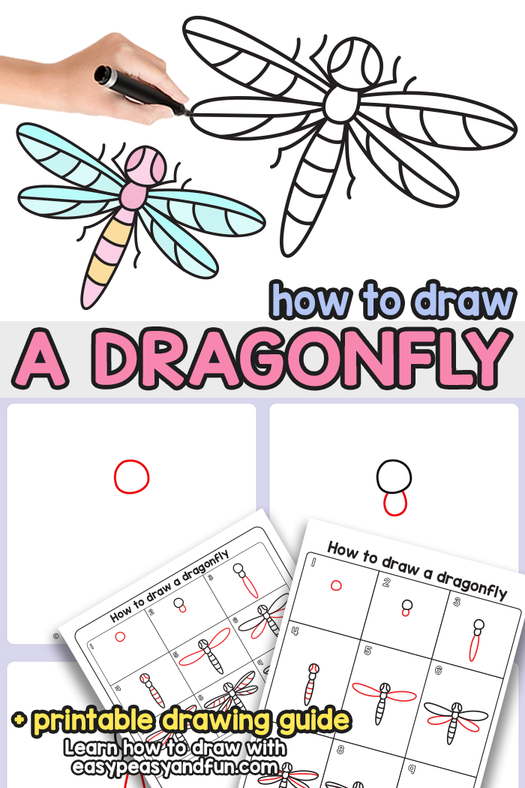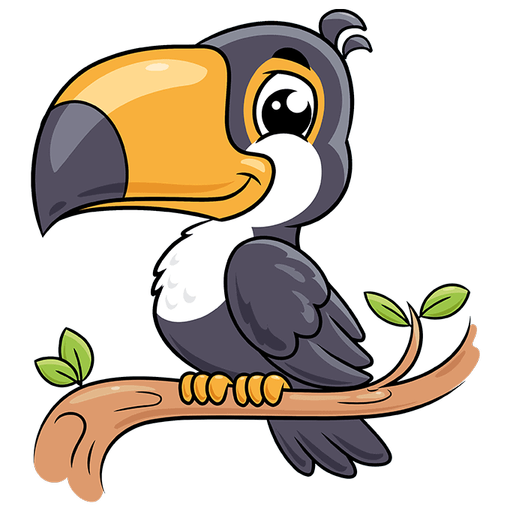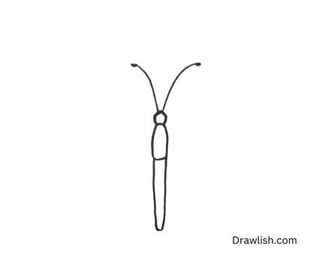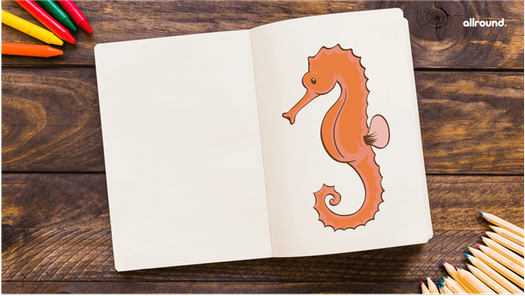Do you want to start sketching landscapes, TODAY? Do you always doodle on every available paper on sight? Did you never get the chance to FINALLY commit to sketching and drawing?If you answered yes, then HOW TO SKETCH LANDSCAPES is a the book you need!Inside you’ll find great theoretical and practical advice on sketching, as well as quick and simple landscape sketching exercises. Liron is a great believer in the “anyone can do it” approach, and this belief resides in every chapter and page of this book.Inside HOW TO SKETCH LANDSCAPES you will find:- The basic mindset for SKETCHING- The basics of sketching (practical tips)- Landscape Sketching exercises: nature and urban- Liron’s super personal approach to teaching sketching
How to draw a landscape?
Drawing a landscape is not easy. Often confused with still lifes in the same way as for photography, to have an interesting angle of view, as well as an impression of realism and life in your drawing, requires technique and rigor in the way you draw your work. We give you some tips to choose the right equipment, and discover the most important techniques to realize your first landscapes.
Define your frame.
Defining a frame for your landscape drawings requires good observation skills. On your sketchbook, make a grid of nine equal parts (with three horizontal and three vertical lines), and make a quick drawing, with simple geometric shapes, of the different elements you want to appear on your sketch. Be careful not to cut off an element at its intersections at the edge of the page, and place your point of interest on one of the center intersections of your grid lines. Following this drawing technique will allow you to draw a beautiful observational drawing later, where your subject will enter the viewer’s line of vision in a dynamic way.

Respect the perspective.
In order to make a realistic landscape drawing, drawing in perspective is a must to get the result you want. In order to draw better and to easily draw the right proportions on your sketches, the easiest way is to determine where your horizon line is on your drawing. You can place a vanishing point, towards which the eye will turn, and by drawing vanishing lines towards it, with a pencil, or on a new layer, so that these can be erased later, it will be easy for you to respect all the proportions of each object. The perspective drawing will allow you to have a landscape without incoherence.
Repaper
The simplicity of pencil and paper, the power of a graphic tablet
Structure your layouts and bring your design to life.
Once your sketch is done and well proportioned, in order to draw your landscape correctly, it will be essential to separate your drawing into several levels, from the first one visible to the observer, whose contours and details will be very pronounced, to the last level whose elements will appear more blurred and less precise. If you want to emphasize a more distant section of the drawing, in this case, detail this part as much as possible, and the further away you get from it, the more the rest of the drawing will lose precision in the details, a bit like a focus with a marked focal length on a photograph. Don’t forget to make your drawing more dynamic, marking the shadows and the nuances and textures of each element. Indeed, a landscape is not a still life. It is first and foremost a living model, and drawing a tree, a river, or drawing a flower in the middle of nature, must be done in such a way that the viewer of your work can feel the wind or the current of the water, and that your artistic drawing is not “flat” and without interest.
To each landscape, its particularities
How to draw a mountain landscape?
Mountain drawing is definitely a good approach to start with landscapes. With its massive hills, it is quite simple to delimit the contours of each element, and to practice the proper framing of your drawing. Then, following the previous advice, you just have to make your sketch. But beware, mountains offer a lot of light and shadow, with the more or less crevassed areas of the rock. It is therefore extremely important not to miss these elements and to play with the luminosity for a realistic result.
How to draw an urban landscape?
Landscapes are not only nature, and the city is an excellent way to progress in your art. It is important to remember that a city can be rendered in a thousand different ways, as the play of light varies greatly between day and night, with artificial lighting everywhere. As a result, shadows can be more complex, as light sources can come from multiple places, and it will be important not to neglect this aspect. Similarly, a city can be recognizable at first glance. Making global outlines of buildings, or focusing on a famous building, can be an option so that people viewing your work can project themselves directly into the place you wish to reproduce. Multiply the points of view, be creative, and you will see that cityscapes have a lot to offer even for the most insatiable designers.
How to draw a seascape?
Many painters can be seen on the seaside dikes, but beach drawing is not the easiest. Indeed, the sea does not offer much relief, and it is difficult to make a work that does not appear flat and unconvincing. It is very important in this type of drawing to clearly delineate the junctions between the beach, the sea and the horizon. Highlighting massive elements such as boats, seawalls or rocks can easily give structure to your drawing. But the most important thing is to transcribe the movement of the water. To do this, you’ll need to frame your design and place a recognizable wave in the center. Then make a cluster of waves on the whole surface of the sea, by delimiting the contours, then play with the shadows and the light to give an impression of movement. Don’t forget to blur your water surface in order to obtain a more realistic texture, without visible contours, and then use the shadows to finalize your drawing. The best way for the beginner is to practice drawing water with a photograph where the waves remain fixed, or via a graphic software, thanks to a graphic tablet, by putting the photo on a layer, and trying to reproduce the movement of the waves by drawing over it on a second layer.
Which material to draw my landscape?
For beginners, the basics of drawing are often discovered with a graphite pencil and a standard eraser. To draw a landscape, a set of pencils, a sketchbook, and a breadcrumb eraser will be an excellent start to exploring the different drawing techniques. If you feel comfortable, you can even learn to draw with charcoal, pastel or why not start painting with watercolor or oil paint, in order to discover a new way of drawing, drawing and painting being strongly related.
2 Learn the basics of perspective
Perspective is the technique of creating the illusion of depth and distance on a flat surface, and it is crucial for landscape drawing. Without perspective, your drawings will look flat, distorted, or unrealistic. To learn the basics of perspective, you need to understand some key concepts, such as horizon line, vanishing point, eye level, and foreshortening. You also need to practice different types of perspective, such as one-point, two-point, and three-point perspective, depending on the angle and position of your view. Perspective can be challenging to master, but it can make a big difference in your sketching and drafting skills.
Выскажите свое мнение
Помогите другим, рассказав подробнее (не менее 125 символов) Отмена
Добавить Сохранить
3 Observe and analyze landscapes
One of the best ways to improve your sketching and drafting skills is to observe and analyze real landscapes, either in person or through photographs. By observing and analyzing landscapes, you can learn how to capture the essential features, shapes, forms, textures, colors, and values of your subject. You can also learn how to simplify complex scenes, emphasize focal points, create contrast, and balance composition. Observing and analyzing landscapes can also inspire you to develop your own style and creativity, as well as to appreciate the beauty and diversity of nature.
Выскажите свое мнение
Помогите другим, рассказав подробнее (не менее 125 символов) Отмена
Добавить Сохранить
4 Use reference materials and grids
Another useful technique to improve your sketching and drafting skills is to use reference materials and grids. Reference materials can be anything that helps you to draw more accurately and realistically, such as photographs, sketches, maps, diagrams, or models. You can use reference materials to study the proportions, details, and perspectives of your subject, as well as to compare your drawings with the original source. Grids are a system of horizontal and vertical lines that divide your paper or screen into equal sections. You can use grids to align your elements, measure your distances, and transfer your sketches from one scale to another. Using reference materials and grids can help you to improve your accuracy, consistency, and efficiency.
Выскажите свое мнение
Помогите другим, рассказав подробнее (не менее 125 символов) Отмена
Добавить Сохранить
Seller’s business information:
Wonder Book
Wonder Book and Video, 1550 Tilco Drive, Frederick, MD, 21704, U.S.A.
Terms of Sale:
We want you to be satisfied with the book you order. Our general description is conservative and the book should be as good or better than our general description may indicate.
RETURNS are cheerfully accepted up to 30 days. We ship out within 1-2 business days and U.S. Standard Shipments usually arrive within 6-9 business days, Priority 3-6. We want you to be satisfied with the book you order. Our general description is conservative and the book should be as good or better than our general descr.
Shipping Terms:
STANDARD DOMESTIC U.S. SHIPPING IS FREE. Priority Shipping is only $6.99 for first item, $1 each additional. Orders ship within 2 business days. Shipping outside of U.S. is typically between $8-13 and takes between 8-15 business days. Heavier books may require additional shipping. Faster Needs Please Inquire.
Payment Methods
accepted by seller





